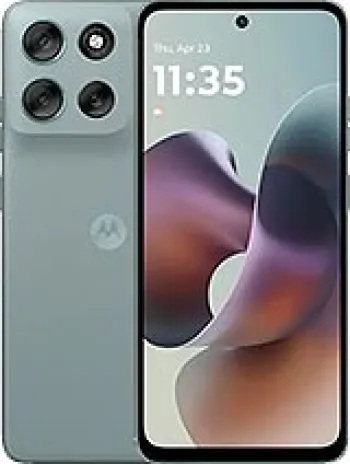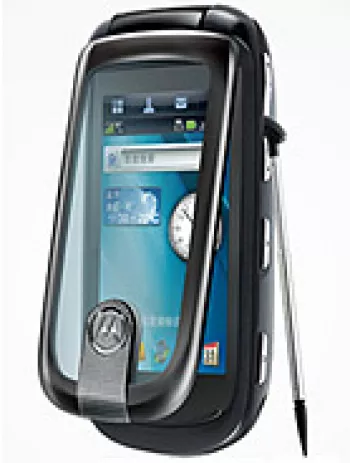
Overview
The Motorola XT810, announced in September 2010 and released in the fourth quarter of the same year, is a device reflective of its era. With a focus on providing efficient smartphone functionality, it was launched with specifications tailored to cater to the evolving mobile technology needs of the time. While now discontinued, it remains a significant piece of Motorola’s history as it contributed to the precedent for their subsequent devices. This article will examine the device in detail, covering various aspects including design, display, performance, and connectivity.
Design and Build
The Motorola XT810 boasts a classic design with dimensions measuring 109.9 x 57 x 18.6 mm and a weight of 165 grams, providing a solid and sturdy feel. It adheres to the traditional design language of smartphones from the early 2010s. The device accommodates a Mini-SIM, a standard for that period, emphasizing its compatibility and usability in various regions. Its robustness in design also speaks to a time when consumers valued durability.
Display
Featuring a 3.2-inch TFT resistive touchscreen, the Motorola XT810 offers a display resolution of 480 x 854 pixels, with a 16:9 aspect ratio. This results in a pixel density of approximately 306 ppi, making the display sharp and vibrant. The screen supports 16 million colors, providing a decent viewing experience for media consumption and gaming, which was significant for users in 2010 when multimedia content started becoming a fundamental part of smartphone usage.
Performance
Under the hood, the Motorola XT810 is powered by a TI OMAP 3430 chipset, featuring a 600 MHz Cortex-A8 CPU and PowerVR SGX530 GPU. While modest by today’s standards, this set of specifications was adequate for handling the applications and functionalities typical of the early Android era. The device ran on Android-based OPhone 2.0, which offered a user-friendly interface and access to Android's growing app ecosystem.
Memory and Storage
Equipped with 512MB of internal storage and 256MB of RAM, the Motorola XT810 provided basic storage capabilities. It also featured a microSDHC slot, allowing users to expand their storage up to 32GB, which was crucial for users wanting to store more applications, photos, and music. This expandability highlighted the phone's flexibility in handling user data storage needs.
Camera
The main camera on the Motorola XT810 is a 5 MP shooter with autofocus capabilities and an LED flash, capable of capturing 480p videos at 24fps. This camera specification was adequate for general photography needs, suitable for capturing casual moments. The device also includes a VGA front camera, which, although basic, enabled users to partake in early forms of video calling and selfies.
Connectivity
The Motorola XT810 supports GSM technology with 2G bands (GSM 900/1800/1900) and 3G capabilities through TD-SCDMA bands. Network speeds are supported with HSPA, offering decent data transfer rates for web browsing and online functionalities. The device also includes Wi-Fi 802.11 b/g with hotspot functionality, Bluetooth 2.1 with A2DP and EDR, and GPS with A-GPS for location services. Equipped with a stereo FM radio with RDS and microUSB 2.0, the XT810 was well-furnished for varied connectivity needs.
Battery and Durability
The device includes a removable Li-Ion battery, which was a common feature at the time, allowing users to replace batteries instead of requiring service center visits. This was a significant advantage, enhancing the device’s longevity and user satisfaction. While specific battery life metrics aren't provided, the battery capacity would align with the energy efficiency of typical smartphone activities circa 2010.
Sensors and Additional Features
Equipped with an accelerometer and compass, the Motorola XT810 catered to navigation and orientation needs fundamental in gaming and map applications. The HTML browser facilitated web interactions, indicative of the device's capability to handle general internet needs efficiently.
Conclusion
The Motorola XT810 stands as a testament to the transitional phase of the mobile industry from feature phones to smartphones. While its specifications are modest compared to modern devices, it represents a crucial part of technological advancement that paved the way for future innovations. Its combination of basic yet functional design, modest hardware, and essential software capabilities embodies an era where foundational elements of smartphones were being explored and developed. The XT810, while now discontinued, serves as a piece of Motorola’s rich history in mobile communications.
Key Features of Motorola XT810
- Supports GSM and TD-SCDMA network technologies with HSPA speed.
- Equipped with a 3.2-inch TFT resistive touchscreen displaying 16M colors.
- Resolution of 480 x 854 pixels providing a pixel density of approximately 306 ppi.
- Powered by Android-based OPhone 2.0 with a TI OMAP 3430 chipset.
- Features a 600 MHz Cortex-A8 CPU and PowerVR SGX530 GPU.
- Expandable memory via microSDHC card slot.
- 5 MP main camera with autofocus and LED flash for enhanced photography.
- VGA front-facing camera.
- Offers connectivity options including Wi-Fi 802.11 b/g, Bluetooth 2.1, GPS, and A-GPS.
- Includes Stereo FM radio with RDS for entertainment.
- Equipped with a 3.5mm headphone jack and microUSB 2.0 port.
- Built-in sensors: accelerometer and compass for better user experience.
- Removable Li-Ion battery for convenient replacement.
Motorola XT810 Main Disadvantages
- Discontinued model, no longer supported by manufacturer.
- Heavy and bulky design with a weight of 165 g.
- Low screen-to-body ratio (~45.0%), resulting in a smaller display area.
- Resistive touchscreen may not be as responsive as capacitive screens.
- Limited operating system support with Android-based OPhone 2.0.
- Weak processor performance with a 600 MHz Cortex-A8 CPU.
- Limited internal storage capacity at 512MB with 256MB of RAM.
- VGA selfie camera, which offers low-quality images.
- Video recording quality limited to 480p at 24fps.
- Lacks modern connectivity options such as 4G and 5G support.

View Also
More Phones
All Rights Reserved +14266 Phones © Mobilawy 2025

























